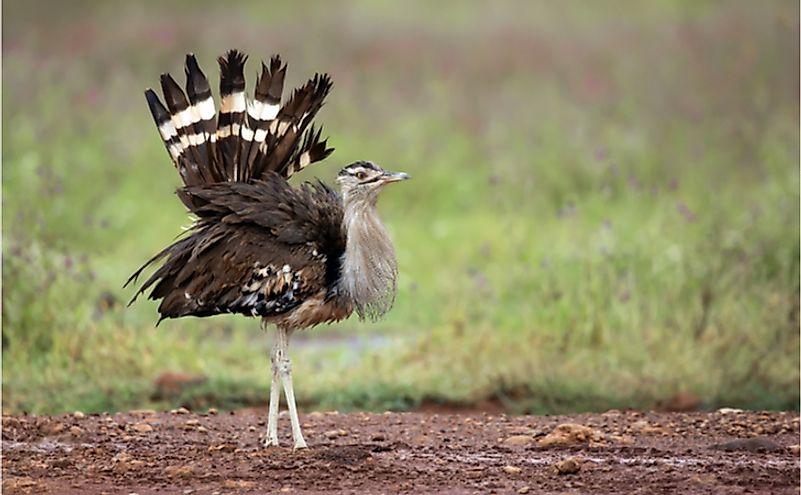Which Is Africa's Heaviest Flying Bird?

The kori bustard bird is the heaviest flying bird that is indigenous to Africa and belongs to the bustard family in the order of Otidiformes. It is distributed in southern and eastern parts of Africa, where it lives in wooded savannas and open grasslands. It is a ground dweller and an opportunistic bird. The male of this bird species can be twice as huge as the female, and it always tries to mate with as many females as possible. Their nests are typically shallow, and the males do not take part in raising the young ones.
Description
The kori bustard is mostly brown and gray but is finely patterned with white and black. The neck and upperparts are vermiculated black and greyish-buff color. The crest is blackish and a white stripe runs above each eye. Loose feathers around the neck making the birds appear to have a thick neck. Their legs are yellowish with three toes. The females of the species are significantly smaller than males.
Distribution And Habitat
The kori bustard is common throughout southern Africa but is not found in densely wooded habitats. It is found in the countries of Namibia, Botswana, Angola, Zambia, and some other African countries. They preferably inhabit open grassy areas with sandy soils and short grass.
Behavior
The Kori bustards spend almost 70% of their time on the ground. Occasionally, they forage in trees and bushes. These birds are very shy and attempt to escape at the first sign of danger. Due to their large body weight, these birds usually avoid flight as much as possible as it consumes a lot of their energy. They are mostly residential birds but occasionally migrate depending on rainfall patterns in their arid habitats.
The Conservation Status Of The Kori Bustard
IUCN enlists the kori bustard as a vulnerable species. The species has declining populations, especially in South Africa. Hunting in some parts of their range like Tanzania threatens their survival. Habitat loss and degradation due to human activities and overgrazing by livestock are also major threats to these birds. Poisons used to control locusts also kills many of these birds.











